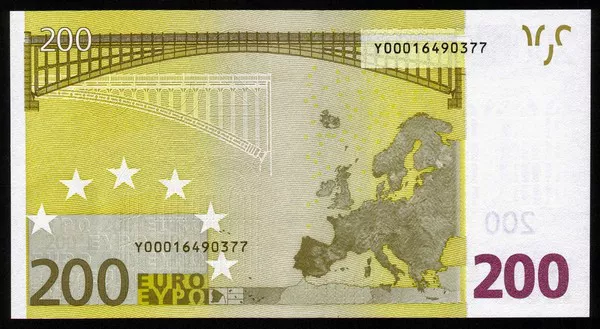In recent years, the world of finance has witnessed a revolutionary shift with the advent of digital currencies. Central banks across the globe are actively exploring the possibilities and implications of introducing their own digital currencies. Among them, the Central Bank of Europe has been a frontrunner in this transformative journey. This article delves into the concept of the Central Bank of Europe digital currency and its potential impact on the realm of forex trading.
Understanding Central Bank Digital Currencies (CBDCs)
Before delving into the specifics of the Central Bank of Europe digital currency, let’s first comprehend the broader concept of Central Bank Digital Currencies (CBDCs). CBDCs are digital forms of a country’s national currency and are issued by the central bank. Unlike cryptocurrencies such as Bitcoin, CBDCs are centralized and typically function as a digital representation of the official currency.
The primary motivation behind the development of CBDCs is to modernize the financial system, enhance payment efficiency, and address potential challenges posed by existing payment systems. CBDCs aim to combine the benefits of digital currencies with the stability and regulatory oversight provided by central banks.
The Central Bank of Europe Digital Currency Initiative
The European Central Bank (ECB), as the monetary authority for the eurozone, has been actively exploring the possibility of introducing a digital euro. The ECB views the digital euro as a means to adapt to the evolving digital landscape and to ensure that citizens have access to a safe and secure form of digital currency.
See Also:Value of the Euro
Key Objectives of the Digital Euro Initiative
Financial Inclusion: The digital euro is seen as a tool to promote financial inclusion by providing a secure and accessible digital means of payment for all citizens.
Payment Efficiency: The ECB aims to enhance the efficiency of cross-border payments and reduce transaction costs by leveraging the benefits of digital technology.
Monetary Policy Implementation: The digital euro could provide the ECB with additional tools for implementing monetary policy, allowing for more direct control over money supply and interest rates.
Security and Privacy: Ensuring the security and privacy of users is a top priority. The ECB is exploring innovative technologies to strike the right balance between privacy and regulatory requirements.
Impact on Forex Trading
The introduction of the Central Bank of Europe digital currency would undoubtedly have significant implications for the forex (foreign exchange) market, the largest and most liquid financial market in the world.
1. Changes in Currency Dynamics
The digital euro could potentially alter the dynamics of currency trading. As a new form of digital currency, the digital euro may influence the value and perception of the euro in the forex market. Traders and investors would need to reassess their strategies in response to the introduction of a digital euro.
2. Enhanced Cross-Border Transactions
One of the primary goals of the digital euro initiative is to improve the efficiency of cross-border payments. If successful, this could lead to faster and cheaper transactions in the forex market. Traders may experience reduced settlement times and lower transaction costs, enhancing overall market liquidity.
3. Shift in Central Bank Policies
The introduction of a digital euro would provide the ECB with new tools to implement monetary policy. Central banks may have more direct control over the money supply and interest rates, potentially influencing exchange rates. Forex traders would need to closely monitor and adapt to changes in central bank policies and their impact on currency values.
4. Integration of Smart Contracts and Automation
Digital currencies often leverage smart contract technology, enabling the automation of certain financial processes. The incorporation of smart contracts in the digital euro could lead to the development of automated trading strategies in the forex market. Traders may explore new possibilities for algorithmic trading and risk management.
5. Privacy Concerns and Regulatory Challenges
While the digital euro aims to prioritize user privacy, concerns about data security and surveillance may arise. Forex traders and market participants would need to navigate potential regulatory challenges associated with the use of a central bank-issued digital currency.
Challenges and Considerations
1. Technology Infrastructure
The successful implementation of the digital euro relies heavily on robust and secure technology infrastructure. The ECB must address potential challenges related to scalability, cybersecurity, and the integration of new technologies.
2. Regulatory Framework
The regulatory framework surrounding digital currencies is still evolving. Forex traders must stay informed about regulatory developments to ensure compliance and navigate potential legal uncertainties.
3. Adoption and User Acceptance
The success of the digital euro hinges on widespread adoption and user acceptance. Forex traders should monitor public sentiment and market reactions to gauge the potential impact on currency values.
Conclusion
The Central Bank of Europe digital currency initiative represents a significant step towards the future of finance. As the ECB explores the possibilities of a digital euro, forex traders need to stay vigilant and adapt to the evolving landscape. The potential changes in currency dynamics, cross-border transactions, and central bank policies underscore the need for a proactive approach in the dynamic world of forex trading. As the digital euro journey unfolds, it opens new opportunities and challenges, shaping the future of the forex market.
Related Topics:
Is Now a Good Time to Buy Euros with Dollars?
Why the Euro Has Overtaken the Dollar: Here’s What to Know
What Prompted Euro’s Loss of Value: What to Know


























